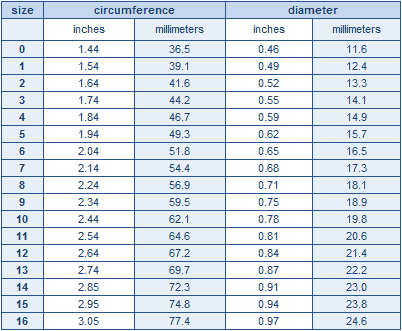This circular sterling silver ring has two options: The Star of Vergina* or Phaistos Disk**.
Made in Greece
Sterling Silver (925 Stamp)
Circle is Approx. 20mm (.79 in) diameter
Choose from the available listed sizes above. (No children's sizes available.) If you are unable to select your desired size when ordering online, please contact us and we would be happy to help you place a special order over the phone.
How to find your ring size: Wrap a string around your finger one time and measure the length. Find the measurement in the size chart under circumference.

* The Star of Vergina (or Vergina Sun or Argead Star) is the name given to a symbol of a stylised star or sun with sixteen rays. The original was unearthed in 1977 during archaeological excavations in Vergina, in the northern Greek province of Macedonia, by Professor Manolis Andronikos, who described the symbol variously as a "star", a "starburst" or as a "sunburst".
When Andronikos discovered the star, it was on a golden larnax in the tombs of the kings of the ancient kingdom of Macedon, and he proposed that the larnax belonged to King Philip II of Macedon, the father of Alexander the Great. (Although, some have attributed it to Alexander the Great's half-brother, Philip III Arrhidaeus.) Another version of the Vergina Sun, with 12 rays, was found on the larnax of Olympias, the mother of Alexander the Great. The larnax is now on display at the archaeological museum in Vergina, where it was found.
Currently, The Vergina Star (or Sun) is the intellectual property of Greece and a state emblem of the country under the World Intellectual Property Organization, as well in its different variations.
The significance of the Vergina Sun is unclear. Archaeologists do not agree whether the sun was a symbol of Macedon, an emblem of Philip's Argead dynasty, a religious symbol representing the Twelve Gods of Olympus, or simply a decorative design. Andronikos repeatedly interprets it as the "emblem of the Macedonian dynasty", though Eugene Borza has pointed out that it is widely used in ancient Macedonian art. John Paul Adams cites its long-established use as a decorative element in Greek art, as well as in the Middle East, Ancient Thrace and elsewhere, and concludes that it cannot definitively be said that it was either a "royal" or "national" Macedonian symbol. Sixteen and eight-pointed suns often appear in Macedonian and Hellenistic coins and shields of that period. However, there are also a number of depictions of Athenian hoplites bearing an identical sixteen-pointed symbol on their armor as early as the 6th century BC, as well as coin designs from island and mainland Greece bearing eight or sixteen-pointed sun symbols (Corfu, 5th century BC, Locris, 4th century BC). Before 1977 the symbol had been regarded as a simple ornament. After Andronikos' discovery the symbol began to be viewed as predominantly associated with Ancient Macedonians, despite its earlier ornamental use in Greek art.
** The actual Phaistos Disc (Greek Δίσκος της Φαιστού, also spelled Phaistos Disk, Phaestos Disc) is a disk of fired clay from the Minoan palace of Phaistos, possibly dating to the middle or late Minoan Bronze Age (2nd millennium BC). It was originally discovered by Italian archaeologist Luigi Pernier, remarkably intact, on July 3, 1908 during his excavation of the first Minoan palace.
Click HERE to view a sample of the original disc.
When discovered, the disc was found in the underground basement "temple depository" - known now as "room 8 in building 101" of a group of buildings to the northeast of the main palace. These basement cells, only accessible from above, were neatly covered with a layer of fine plaster, and amongst black earth and ashes, mixed with burnt bovine bones. This grouping of 4 rooms also served as a formal entry into the palace complex. Italian archaeologist Luigi Pernier recovered this remarkably intact "dish", about 15 cm in diameter and uniformly slightly more than one centimeter in thickness, on July 3, 1908 during his excavation of the first Minoan palace.
The original disc is about 15 cm in diameter (slightly more than one centimeter in thickness) and covered on both sides with a spiral of stamped symbols. Its purpose and meaning, and even its original geographical place of manufacture, remain disputed, making it one of the most famous mysteries of archaeology. This unique object is now on display at the archaeological museum of Heraklion in Crete, Greece.
There are 241 tokens on the disc, comprising 45 symbols (for example, "Man, Woman, Child, Bow, Arrow, Shield, Ship, Dove, etc.), mostly representing easily identifiable every-day things. In addition to these, there is a small diagonal line that occurs underneath the final sign in a group a total of 18 times. The disc shows traces of corrections made by the scribe in several places. Some scholars have pointed to similar resemblances with the Anatolian hieroglyphs, or with Egyptian hieroglyphs.